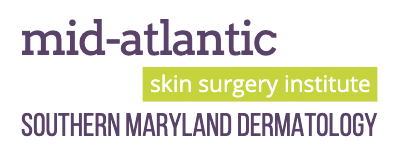
SRT Treatment For Skin Cancer and Keloids in Maryland, Virginia, and Washington DC
Mid-Atlantic Skin Surgery Institute of Maryland offers SRT Treatment for Skin Cancer and Keloids to the residents of Maryland, Virginia, and Washington DC.
What Is SRT Treatment For Skin Cancer?
Superficial Radiation Therapy, or SRT Treatment, is a non-surgical treatment for non-melanoma skin cancer and raised scars known as “keloids.”
According to the National Cancer Institute, approximately 40 percent to 50 percent of adults over the age of 65 will and can experience some type of skin cancer, but many of these patients prefer to avoid surgery or are at higher risk for surgery.
Patients are apprehensive because of permanent scars on the face where the cancer or keloids are removed.
SRT is an innovative treatment for skin cancer and keloids uses radiotherapy to treat your skin cancer and keloids.
How Does SRT Treatment For Skin Cancer And Keloids Work?
Radiation has long been used in the fight against cancer. The treatment works by changing the cancer cells so that they cannot reproduce, and ultimately the cancerous cells die.
This is the technology in action! SRT Treatment is a special radiotherapy that penetrates to a depth just below your skin surface where cancer cells live.
By interrupting the cancer tissues we target and kill all new cells from multiplying. For keloids, SRT Treatment ensures that only the targeted lesion is treated and the surrounding and underlying healthy tissue is not harmed.
What Can Be Treated With SRT Treatment For Skin Cancer And Keloids?
SRT Treatment is effective for skin cancers, lesions and keloids on the arms, legs, back and torso, and the treatment is especially beneficial for skin cancers and keloids that occur on the head and neck, such as the nose, eyelids, lips, corners of the mouth and ears.
How Is The SRT Treatment For Skin Cancer And Keloids Procedure Performed?
Dr. George Verghese may recommend multiple SRT Treatments for your specific case.
The radiotherapy energy is concentrated on the treatment area with a specially designed cone-shaped instrument.
The concentration of energy being dosed is measured by the type of cancer being treated. Energy is applied to the area for approximately 90 seconds.
Is The Treatment Painful?
The procedure is painless, very similar to having an x-ray done.
You may have some redness after your treatment, and a scab may form over the treated lesion.
No scaring or aesthetic deformity from cutting away skin tissue.
How Long Will I See Results?
The results of your SRT Treatment for skin cancer and keloids depend on the condition that is being treated, as well as the size of the treatment area.
Dr. Geroge Verghese discusses the results of your treatment during your consultation and follow-up visits.
How Long Do The Results Last?
SRT Treatment for skin cancer and keloids gives you long-lasting results.
Certain lifestyle choices, such as smoking, sun exposure, and cultural ethnicity, may place you at greater risk for developing skin cancer and keloids.
Dr. Verghese and his staff will provide you with post-treatment instructions to give you the longest possible results.
Compliance and strong attention to details are critical. For example, apply sun-screen to protect yourself outdoors-daily.
Can SRT Treatment For Skin Cancer And Keloids Be Combined With Other Treatments?
Dr. Geroge Verghese may recommend other treatments that can help you reach your cosmetic and medical dermatology goals.
Mid-Atlantic Skin is a cosmetic and clinical institute with a mission around skin health and wellness.
The focus with our clients who suffer from skin cancer and “Keloids” on the face require options.
“We are one of the only practices in the country to have this incredible SRT technology,” said Dr. George Verghese.
Having SRT technology available to treat patients concerned about facial scaring and skin deformities is a cosmetic need we can now fill.
